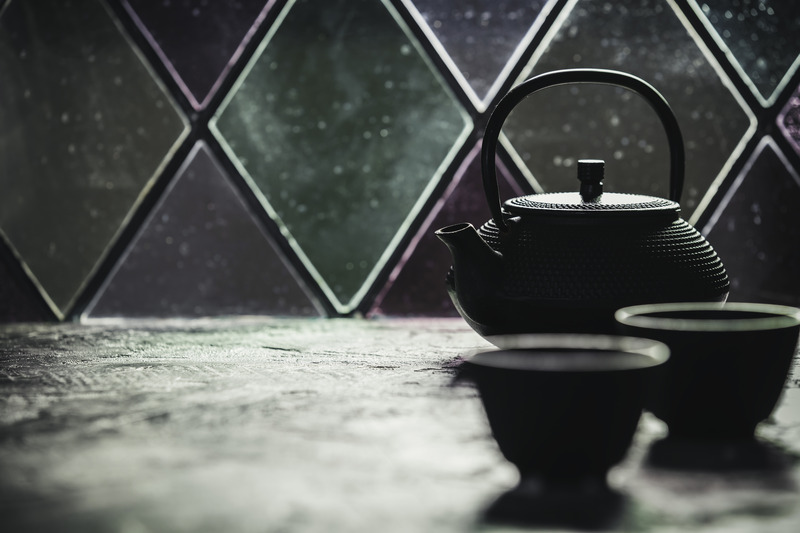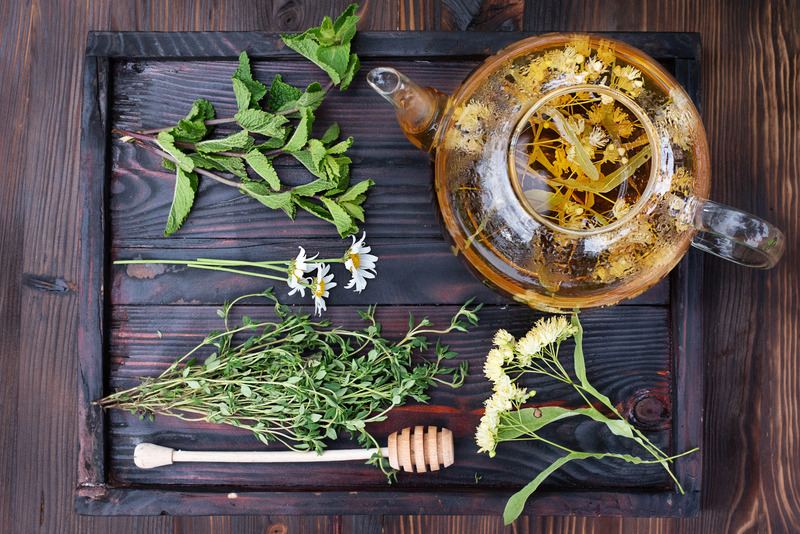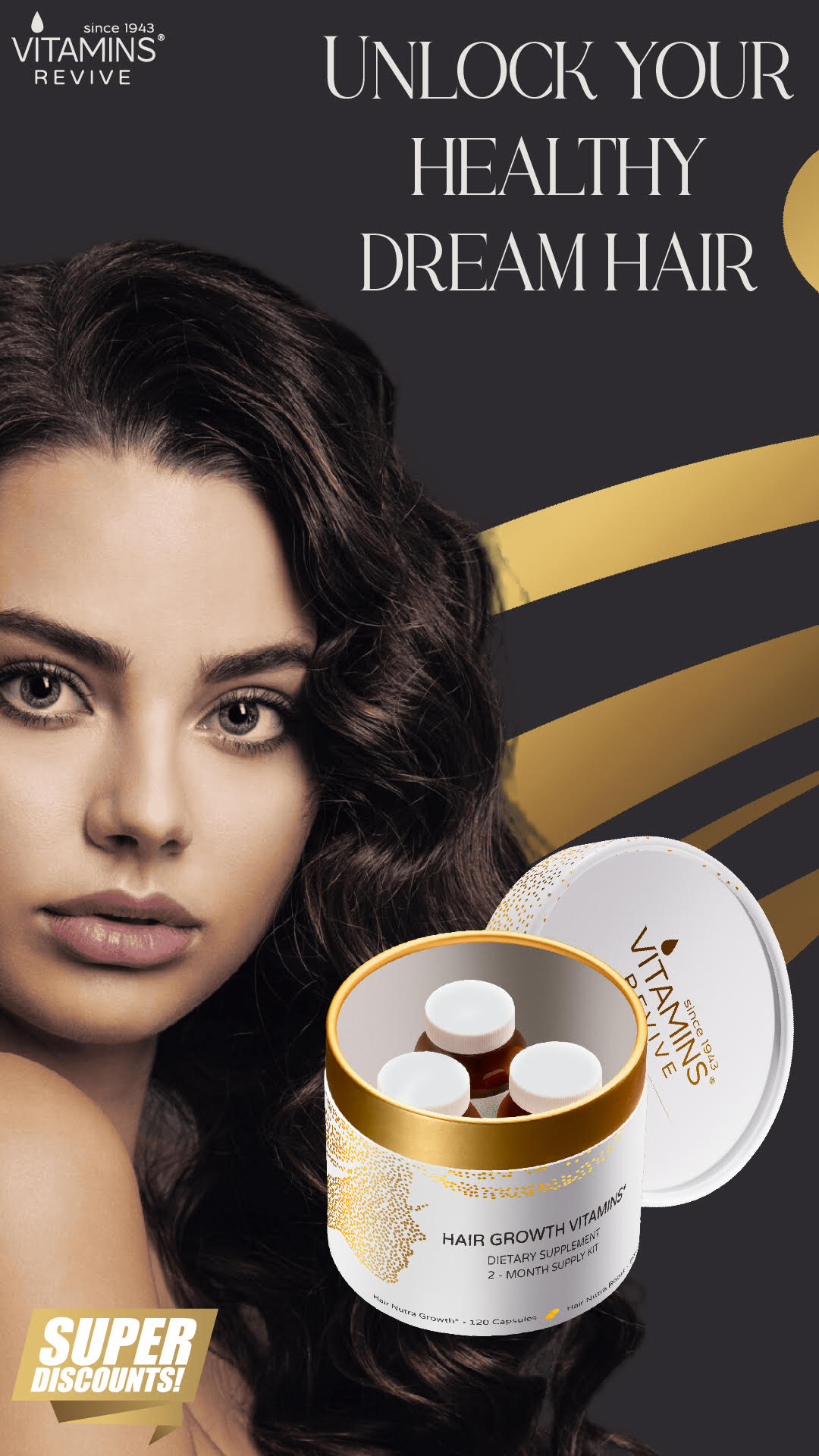
Tea is not only a feel-good drink for tea lovers and a cup of energy for everyone; it’s more than that. Not just coffee, tea has its own following, and many cultures, including the British, are known for their love of tea.
Irrespective of your hair type, color, and requirements, there’s probably a tea rinse that works for you! So, let’s look at the different hair rinses and how to use them, shall we?
Black Tea Hair Rinse

You can also use a black tea rinse as a hair spray, so we’ll see how to do both here. Those who are allergic to tea move on to herbal tea rinses.
Things You’ll Need
- Tea Bags (or) Tea Leaves (or) Dust Tea
- Water – 500 Ml
Instructions
Method 1
- Steep 5 tea bags or 5 spoons of tea leaves in hot water. You can bring it down if you want a lighter tea.
- Once the water begins to boil, simmer and let it simmer for a while – the water level should reduce a bit.
- Let it cool down fully. Then, you can add any essential oils, if you prefer, while it is cooling.
- Once it is cooled down, filter it and transfer it to a spray bottle.
Method 2
- Heat the water, add the tea leaves or bags, and simmer for a few minutes.
- Once the water changes color, switch off the flame and let it continue steeping, closing the bowl.
- Once it cools down, filter, and your hair rinse is ready for use.
How To Use
Method 1
- For the first method of tea rinse you’ve prepared, spray it on your hair and scalp liberally and cover your head with a shower cap.
- Yes, spray when your hair is dry, like a pre-shower treatment.
- Wait for at least 30 minutes before washing off.
Method 2
- Pour the hair rinse on washed hair after shampooing and rinsing, and massage the hair rinse for a few seconds.
- Divide your hair into sections and pour it on wet hair slowly.
- Wait for a few minutes before rinsing off.
Notes
You can use the tea bags that you’ve infused on your eyes to combat under-eye bags.
Ideally, use tea leaves or bags, as dust tea particles can remain when you use the tea rinse or block the spray nozzle if you’re using the spray.
Apple Cider Vinegar Hair Rinse

Vinegar is a great way to eliminate scalp build-up, typically residue from styling products. Use it once in two weeks for clarification or less to prevent excessive drying.
Things You’ll Need
- Apple Cider Vinegar – 1 Cup
- Water – 2 Cups
- Tea Leaves or Bags – As needed
Instructions
Method 1
- Prepare the tea rinse and let it cool down.
- Filter and add in the acv and mix to combine.
Method 2
- Soak in the tea leaves or bags overnight and prepare the concoction in the morning.
- Follow the same steps after it cools down.
How To Use
You can use this as a spray or final rinse.
Just make sure to pour it slowly when using it as a rinse.
Wait for a few minutes before washing off.
Notes
For hair rinse, the duration it stays on the hair and scalp is less, considering your hair is already wet. So instead, you could use it as a hair spray ahead of your shower and keep it longer.
Herbal teas can sometimes be used as a leave-in, even tea. In that case, spray, re-spray, and style after dries.
Unlike coffee decoction, tea doesn’t leave your hair sticky in most cases, especially herbal teas.
You can also do it a day after you shower so the scalp is clean and ready to soak in your spray.
Green Tea Hair Rinse

Green tea has a higher antioxidant content and less fermentation as it doesn’t go through a long fermentation process like black tea. For this reason, many prefer green tea over black tea hair rinse.
Green tea hair rinse is also great if you’re fighting dandruff and want to promote hair growth and curb hair loss.
Things You’ll Need
- Green Tea Leaves or Bags – As needed
- Water – 1 Liter
Instructions
- Soak the green tea leaves or bags overnight.
- Next morning, bring the water to a high temperature but NOT enough to boil over.
- Once the water is fairly hot and steaming, add green tea leaves, switch off the heat, and close the bowl with a lid.
- Let it steep and cool down.
- Filter and your green tea hair rinse are ready to go!
How To Use
You can use it as a final rinse – in this case, slowly pour the prepared rinse on your head after washing your hair.
Divide your hair into sections to make sure you pour it all over.
Wait for a few minutes before rinsing off.
Notes
Don’t boil it to make the most of green tea hair rinse.
As mentioned earlier, you can use the essential oils of your choice.
Use ACV in this green tea rinse to clarify your scalp and add shine to your hair.
You can also do the green tea rinse infusion style, though it’s not instant, so you need to prepare ahead.
You can use apple cider vinegar to prepare the infused vinegar with any tea you choose. We will add the method again here in one of the tea rinses.
Oolong Tea Hair Rinse

Oolong tea is not only good for your health but also for your skin and hair. It improves the shine and luster of your tresses, and the antioxidants improve hair and scalp health.
Things You’ll Need
- Oolong Tea Leaves – A Cup
- Apple Cider Vinegar – As Needed
Instructions
- Add the oolong tea leaves to a sterilized mason jar.
- Cover it with apple cider vinegar and cover with a muslin cloth.
- Keep it out in the sun but in shady areas every day and keep it in at night – continue this for 2 – 6 weeks till the vinegar is infused well with the tea.
- Your infused vinegar is ready for use when fully infused.
- Alternatively, you can prepare the concoction covered in the black tea rinse and use it for an instant recipe.
How To Use
Pour two tablespoons of infused vinegar into a cup of water and use it as your final rinse. Wait for a few minutes before washing off.
Ideally, use it as hair spray, diluting it with water, and showering for a longer soaking time.
Notes
You can also use essential oils in this recipe.
You can also add other herbs or flowers per your preference while infusing the vinegar. Ensure you dry the herbs or flowers well (if you’re using fresh ones) before adding them to vinegar).
Herbal Tea Rinse

Not just tea, you can use any herbs or flowers to prepare tannin or caffeine-free herbal teas that work equally well or better than tea rinses for your hair. A few hair-beneficial options for herbs and flowers for your hair include lavender, chamomile, hibiscus, margosa, false daisy, basil, rosemary, sage, etc.
Things You’ll Need
- Herbs – 3 – 4 Tbsps.
- Water
Instructions
- Bring the water to a boil, add the herbs or flowers of your choice, and simmer it for a few minutes.
- Then, remove it from the heat and let it cool down.
- Filter, and your rinse is ready for use.
How To Use
Pour the rinse slowly over your washed and wet hair, dividing your hair into smaller portions and covering different sections of your head.
Massage it in and wait for a few minutes before rinsing it off.
Notes
You can use more than one herb, flower, or combination of your chosen ingredients.
You can do the infusion method for better results; just make sure to prepare well ahead.
You can soak the herbs overnight and prepare the concoction in the morning to cut short the boiling time.
What is the Purpose of Using a Hair Rinse?
Tea offers more than energy in a mug! It’s one of the best ways to spruce your hair, promote hair growth, improve scalp and hair health, curb gray hair, combat frizzy hair, prevent hair breakage, soothe scalp irritation, add shine, and more. It’s a natural alternative to pricey chemical-laden hair products.
Just choose the right tea for your requirements and reap the many benefits of your tea rinse. You have green tea, black tea, rooibos tea, and floral and herbal teas to choose from, according to your preference and requirements.
Benefits Of Tea Rinses For Hair
The benefits of tea rinses are many and vary with the tea you’ve chosen for the job! The key is to choose the right tea for your requirements.
If you want to spruce your hair and revitalize it, go for green tea. Green tea renders energy to dull and lifeless hair, and the antioxidants in green tea rejuvenate your hair and scalp.
If you want to promote hair growth, it’s rosemary tea, while it’s sage and rosemary or a false daisy or all three for curbing premature graying, margosa for combatting lice and dandruff or itchy scalp, aloe vera for dry or irritated scalp, etc. False daisy can also promote hair growth, whereas rosemary essential oil can be added to rosemary tea rinse for added benefits.
If you want to relax and unwind, it’s lavender, but it’s also a great antifungal, antibacterial, healing aid, and more. So it offers all those benefits when used as a rinse, stimulates hair growth, nurtures and nourishes hair, etc.
Oily hair? Adding a dash of lemon juice to your tea rinses can fight greasy hair or scalp while adding aloe vera juice can combat dry hair or soothe dry and irritated skin and scalp. Chamomile has anti-inflammatory and soothing properties that can calm an irritated or inflamed scalp, etc. Chamomile can also add highlights to blonde hair!
On the other hand, red tea, including hibiscus, can add highlights to red or light brown shades of hair. It can also promote hair growth, strengthen the hair shaft, curb hair loss, etc.
Black tea is particularly good for combating hair loss. Like that, every tea has benefits that are shared or unique. It can also darken your hair color, hide premature grays, etc.
Did you know hibiscus tea, chamomile tea, rooibos tea, black tea, etc., can be used to add highlights or darken your hair color? The best way to get the color to darken more is to use it as a spray using a spray bottle. When using your tea rinses as a spray, you can keep them longer, making the shade grow darker.
Likewise, every tea or herb, or flower chosen has different benefits and uses. So, choose what works best for you based on your needs and make them part of your hair care routine.
Side Effects of Tea Rinses
Tea can leave your hair and scalp high and dry with frequent usage. Limit tea rinses to once a week to prevent drying. The best part about this side effect is that it is not the same for herbal teas, and they can be used more frequently, even daily!
Final Thoughts
As always, feel free to write back to us with any questions or concerns or feedback, or requests. We love hearing from you all.
DIY doesn’t have to be hard or complicated. Even simple steps go a long way. So start your DIY journey with these natural hair rinses if you haven’t started already.
However, if you don’t have the time, or feel conflicted, do check out the Vitamins Revive product page. They have a whole range of premium vegan hair care cosmetics to suit every need and requirement out there. You might find a product that works for you.
Do let us know how you like these recipes and how they work out for yo










